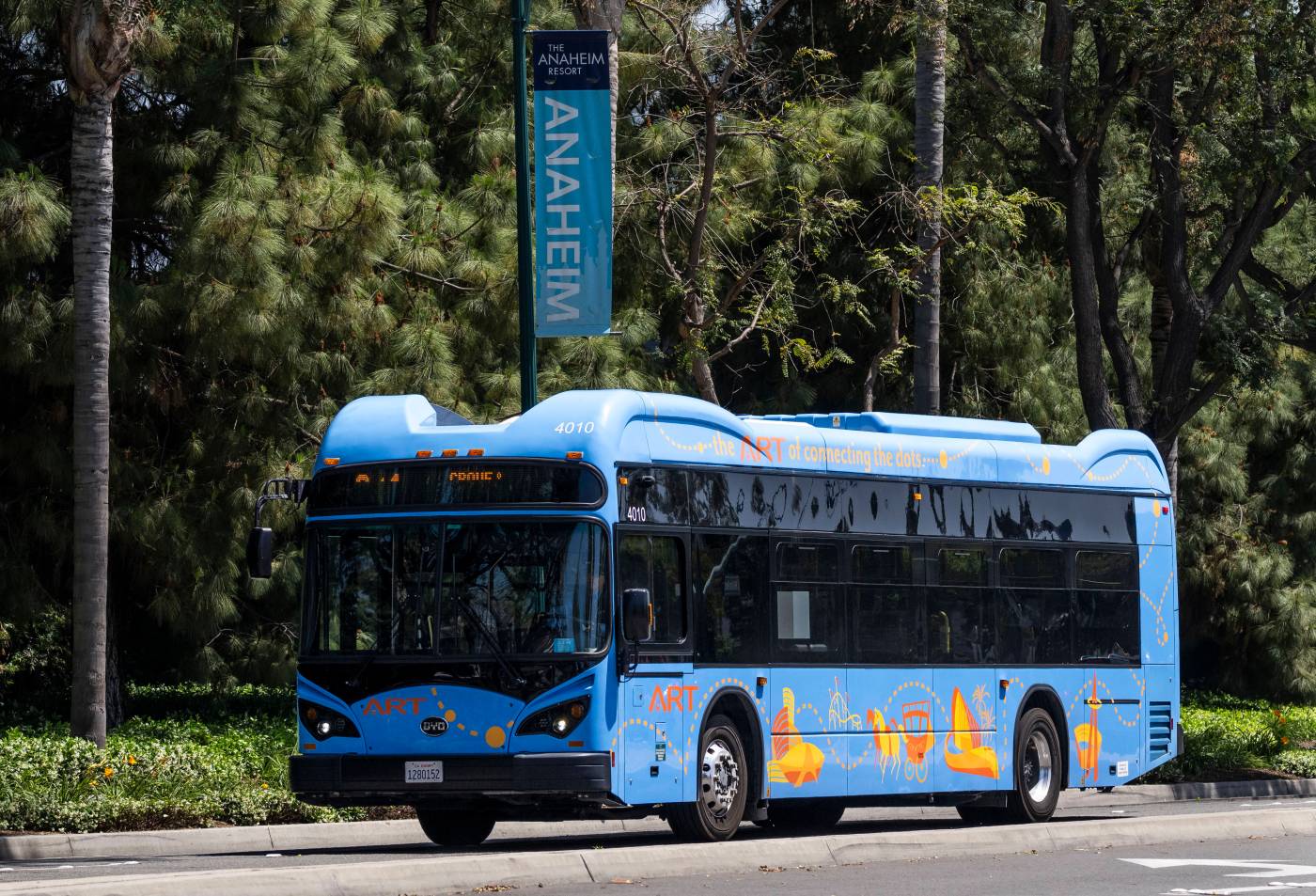It is looking more likely that the city will take over the bus service that moves more than 8 million riders around the Disneyland resort area each year as the nonprofit Anaheim Transportation Network faces mounting financial strain.
The Anaheim Transportation Network’s board authorized this week for its executive committee to negotiate a binding memorandum of understanding with the city, laying out terms for a potential takeover. The agreement would return to both the board and the City Council for approval before becoming final.
Anaheim Public Works Director Rudy Emami, presenting for the city, told board members the priority is to stabilize ATN financially. He called the service “an asset to Anaheim,” but also said “funding pressures and cost escalation are unsustainable.”
“Our shared goal is to protect what’s working while putting ATN on a sound financial foundation,” he said.
In a takeover, Anaheim would assume ultimate control of ATN, with the City Council serving as the governing authority. The ATN board would remain in place in an advisory role, similar to how the hotel industry has provided input for the resort maintenance district for more than 20 years, Emami said.
That model, he added, would ensure “a consistent, respected voice for the hotel community.”
The network’s buses serve Disneyland and surrounding hotels, running under the Anaheim Regional Transportation name. There is also the EVE, or Everyone Ventures Everywhere, service to John Wayne Airport and the FRAN, Free Rides Around the Neighborhood, service in the Packing District and City Hall area.
Funding comes mainly from hotel assessments — a per-room fee — and fare revenue. But labor costs have risen more than 60% since 2020, its officials have said, leaving the system with what is described as a structural deficit.
To keep buses running while long-term financial plans are worked out, the board approved a temporary budget that gives ATN a 120-day spending authority through Jan. 31. During the first 90 days of this fiscal year, ATN operated with a one-time $712,000 contribution from the tourism district, the agency said. The temporary budget will allow ATN to pay staff and maintain service using existing hotel fees, fares and state funding while longer-term solutions are worked out. It also assumes additional tourism district funding — the tourism distict gets its money from a 2% fee hotels agreed many years ago to add onto nights’ stays to fund marketing and transportation improvements.
“The concept is really to give us the space to get through Jan. 31, 2026, understanding they will be working on that MOU and what the future financial and organizational structure of ATN will be,” said Matthew Hicks, interim chair of the ATN board.
Longer term, the city aims to maintain current hotel assessments and eventually reduce fares and expand ridership as operations are optimized, Emami said.
He also described potential new revenue streams, including a concession agreement tied to the proposed east-to-west connector and a fee on ride-hailing services such as Uber and Lyft operating in the resort area.
Emami said Anaheim’s goal would also be to retain existing drivers wherever possible, with contractor transitions prioritizing continuity of service and customer experience.
“The only disqualification would be background check results,” he said. He added the city would also work with ATN leadership to identify key staff whose expertise is critical for a smooth transition.
Wednesday’s decision does not finalize the takeover. ATN’s executive committee is expected to bring back the draft MOU later this year.
